Mirror Worlds on Second Life
Epredator (a.k.a Ian Hughes) and Yossarian Seattle a.k.a Rob Smart, both of IBM and Eightbar, gave Destroy TV a guided tour of Hursley. “The Unofficial Tourists’ Guide to Second Life,” says “the IBM island Hursley, is being kept strictly under wraps.” But, thanks to Epredator, Yossarian and Destroy TV, a tour of this inner sanctum of innovation – invention and insight, IBM’s incubator for pervasive computing and the meaningful virtualization of reality and more, on Second Life, is documented and searchable online in Destroy TV’s Flickr stream. Destroy TV has created the most searchable archive of Second Life to date.
“Innovation has to be part of your life.” (Andy Stanford-Clark)
The Real Life house pictured above is IBM Master Inventor Andy Stanford-Clark’s Real Life farm, and Llama trekking business on the Isle of Wight, UK. On the right is the virtualization this house which is part of a Second Life Real Life Home Automation project. The pictures in the bottom row shows Stanford-Clark’s Real Life Llamas on the left and their virtual counterparts on Second Life on the right. Real and Virtual Llamas are linked through GPS and MQ telemetry so that Andy S-C can be a good shepherd when away from his farm (see this IBM podcast).
Pervasive and Mobile Computing and Virtualizing Reality: Why High End Business Executives Care
“because it’s what enables an event-driven, on-demand business.”
While his Llama mapping project began because Andy S-C needed to protect his trekking lamas from theft and misadventure, it evolved into a solution to a customer demand for “Pay As You Drive” insurance for Norwich Union.
If you want a detailed explanation of how IBM inventors are using Second Life and IBM’s MQtt messaging to virtualize and make meaningful data from Real Life on Second Life there are many relevant posts on Eightbar. Also see my earlier post on C.J. Chowderhead’s virtual lab.
Virtualized Worlds Are Key To Sustainable Development
Also, described in the IBM podcast and virtualized in Second Life (and visited by Destroy) is the bridge below where in Real Life Andy Stanford-Clark invented a flood monitoring system that has wide applications not only to the insurance industry for better flood prediction, but for monitoring the effects of global warming.
If you have read Ugotrade before you will know that I try to explore the possibilities of virtual realities and 2.0 thinking, pervasive and mobile computing in positive global development. The work of virtualizing reality has incredible significance for a sustainable future.
From an uber visionary perspective, this is a future where “green” means, perhaps, eliminating the need to build anything at all. This remark comes from Keystone Bouchard, Virtual Architect for Clear Ink, who was also visited by Destroy TV – more later this post about Keystone, and 3D Experience Architecture.
On Ugotrade I try integrate an expansive view that imagines an end to this era of industrial production, all it’s horrors of inequality, waste, pollution and scarcity, with an on the ground perspective that not only tracks corporate innovation, but looks at how people in developing economies (including Second Life) are using virtual realities in innovative ways, for example:
Mobile phones have enabled Africans to leapfrog lack of banking infrastructure and invent virtual banking. And, how ordinary people all over the world are reinventing their lives and careers in Second Life.
Virtualized Business on Second Life
Destroy’s visit to the IBM Business Center is also worth a mention. So much of business reporting on Second Life has focused on whether Second Life is “working” from a very narrow and often poorly conceptualized marketing/sales perspective. This kind of reporting on Second Life has been all too common lately, even by reputable business writers. But, it has been rife with inaccuracies and is based on many misconceptions – see here for a thorough analysis.
I found out, on the ground, some of the innovative ways IBM is developing their Second Life Business Center as a place to relate with their customers, on what is approaching a 24/7 basis, on Destroy’s Flickr stream!
A Searcheable Guide To Second Life
Destroy TV has, in the last ten days, created, an extraordinary guide to Second Life (which will be released as a DVD later). But this guide is available now as a searchable Flickr stream of more than 99,000 photos and the accompanying chat. You can check out Destroy’s flickr tags that logged every place she has been and every avatar she encountered here. Flickr tags were created from the Second Life chat lines and are correlated with a SLurl.
This is the first time that such a vast searcheable document of Second Life has been created. Perhaps, you can, tell how powerful it is by the way I was able to match up Second Life photos from Destroy’s record with Real Life photos I found through Googling Hursley Park on the web.
A toast to Destroy’s accomplishment!
The cover of “The Unofficial Tourists’ Guide to Second Life” is held in front of the camera streaming the Fuse Gallery event into Second Life.
Sharing The Experience Of Second Life
Steve Nelson from Clear Ink notes:
I think both machinima and exported live feeds will be an important part of one of the hurdles of SL, namely the learning curve. The more people are acclimated to the environment before they enter for the first time, the more accelerated I think their introduction to SL will be. It’s like visiting a new country after having seen videos – it isn’t as much of a shock when you actually get there.
As Destroy toured Second Life her adventures and chat were not only streamed live to the web at Destroy TV, they were also projected on a wall in Fuse Gallery, New York City, where people could watch and interact with the avatars. Also what was happening in the Real Life Gallery in New York City was streamed back into Second Life to the GHava{SL} Center for the Arts. This was quite a conceptual and technical achievement.
Pictured above is Clear Ink’s 3D Experience Architect, Keystone Bouchard. When Destroy accompanied by Jerry Paffendorf encountered the team from Clear Ink (one the most visionary agencies working on Second Life), they found people who really got the significance of the multiple levels of reaction this project created (photo from Destroy’s Flickr stream).
A good opportunity to check out Clear Ink and their work on SL will be this event on Autodesk Island HERE (SLurl), June 14, 10AM PST Chris Luebkeman : Future Challenges: Global Creative Contexts.
Annie Ok writes of this extraordinary meeting of minds in a long comment on this post on 3pointD. Here is an excerpt:
the exemplary moment of Destroy’s potential educational/informative application has been the happy accident of running into Keystone Bouchard and him immediately TP-ing in Theory Shaw and the ensuing tour they gave to destroy of architecture island and the Wikitecture project.
Keystone talked to me later about the Clear Ink encounter with Destroy. There are several key-points Keystone touched on:
Sharing The Experience of Second Life with People In Real Life
At Clear Ink, we had several people watching on my screen, who could see both my avatar’s movements and Destroy’s view through my browser. So, on my end, there were several people viewing both portals simultaneously. But, what makes it really interesting is that through this virtual medium, it ended up being both absorbed and transmitted through a multitude of experiences. Because, on their end, they had the virtual scene being projected onto the wall of a real life gallery with several people in real life witnessing the phenomenon – even taking pictures of themselves standing next to avatars – as you would in a real life gathering. It blurred so many lines – it was quite extraordinary.
Interacting With An Avatar On Second Life To produce A Shared Narrative
We could see what Destroy was looking at through the browser. I could see her camera so, when she would move her camera over to a certain build, I could describe what she was looking at, so the people in the gallery could read what i was describing. In a sense, we even transcended our avatars – and became invisible cameras – flying around the island looking at, touring and describing the entire island – while our avatars stood still. Plus, at Clear Ink, it was a great way to engage my co-workers, and show them a really unique experience – using SL in a way it hadn’t ever been used before.
Sharing Avatar Viewpoint To Enhance Collaboration On Second Life
Architecturally – in a virtual environment – understanding the avatar’s gaze is absolutely critical – and one of the biggest challenges in a virtual environment. Because, I can design something using Mouselook – and it could be visually compelling based on the way I use my camera – but another user would have an entirely different experience based on the way they use their camera. So, you have to design a building to accommodate many levels of approach and viewpoint.
Being able to see what Destroy was looking at did truly provide a missing link. I was able to give her a more thorough description of the island. At one point, I was describing the Wikitecture experiment. But I could see that Destroy was looking at the Architecture 101 build – so I shifted the conversation to describe that. At which point, Destroy started going from project to project, knowing that I could continue the narrative. The collaborative potential is something we’re very interested in and actively building experiments around on Architecture Island.
The Metarati In Action
Jerry Paffendorf at Destroy’s wrap party last Saturday at Fuse NYC watches Destroy’s visit to Relay For Life – the American Cancer Society’s SL adventure that has sparked enthusiasm and creativity from Second Lifers (three years on SL now!) Destroy was welcomed by a large crowd of avatars.
Jerry Paffendorf, Metarati and Futurist in Residence for the Electric Sheep Company (this is an independent project) teamed with artist Annie Ok, curator and collaborator, and Christian Westbrook (Metaverse Architect ESC) to create Destroy TV. Ben Byer, who is from Apple BSD technology group, was visiting from California, (on right). He came up with the name for Destroy TV.
It is an extraordinary feat of vision combined with some coding genius. They pulled off the extended two way streaming, projection and logging to Flickr with only a few minor burps. This is no minor feat. See Christian’s blog for a post on what happened when their Flickr stream topped 99,000.
Turning Extreme Lifelogging Into Meaningful Virtual Experience
I talked at length with Jerry Paffendorf at the closing party at Fuse Gallery about the challenge of extreme life logging in virtual worlds both from a technical and expressive point of view. Just like there is a need for a new language of virtual architecture as Keystone points out – “a more interactive, reflexive architecture” – there is a need to find an expressive language for life logging. Jerry Paffendorf has been pushing the envelope on this and has some very interesting projects in the pipeline (which I will let him reveal).
Flickr, the poster child of Web 2.0, began as a user generated virtual world.
Jerry talked about how Flickr is a big influence on his thinking right now. Flickr as he notes is the poster child of Web 2.0 – it gets better the more people that use it and interact with each other inside it. But, Jerry also pointed out something about Flickr that may not be so well known, i.e., it started out as user generated virtual world called Game Never Ending.
It is fascinating how Destroy TV by using Flickr to document Second Life begins to reconnect with this initial conception. Jerry noted that it is possible Destroy TV was the most prolific poster to Flckr in the world, during Destroy’s ten day adventure.
Also, Jerry sees the Destroy Project as a sketch for how we are our going to record and organize our own Real Lives – remembering the places that we have been and the people we have been around. This is what Destroy TV does, and documents. Like Game never Ending turned out not simply to apply to organizing a virtual world, Destroy TV is also about inventing ways to organize our experience of the real world, and bridge the imagination gap needed to do this (also see 3pointD on Ambient Gaming: Life Logging in Disguise). Talking about the future of Destroy TV, Jerry said:
What I want to see happen is that anybody who logs into Second Life, or any virtual world, can record absolutely everything that they see and create a lifelog of their Second Life experience.
Virtual Worlds have a big advantage over the real world re life logging because they have built in wireless, RFID, meta data and geolocation, so it makes sense for this to be a place we will proto-type life logging.
The search for a an expressive language for extreme lifelogging -where the traces and tracks of real life can be expressed in virtual space in meaningful ways – is where 3D experience design and the virtualization of real life merge to create innovative hybrid realities.
A 3D Experience Architect- building a new language for virtual design.
I have been meaning to visit Architecture Island for a while now, and seeing Destroy’s Flickr stream inspired me to go yesterday. First, I talked to Keystone Bouchard.
Keystone Bouchard is a Real Life architect who has recently transitioned exclusively to a virtual mode as a “3D Experience Architect” with Clear Ink. He is standing here in an experiment he is working on. You can click on the video grab below to see a short machinima.
The blurring of lines between familiar and unfamiliar experiences of music and space create an other-worldly environment that is cinematic yet still an invitation to interaction.
Keystone observed avatar movement and behavior on a Architecture Island, then wrote a piano score that approximated that movement. Then he transposed a video of him playing that score and imported the video. His goal is to make the architecture interactive so that it understands where you are and what you’re doing – and provides an audible reaction to it.
Wikitecture On Second Life
Keystone is also interested in the crossroad between the professional practice of architecture and virtual environments, as well as the development of a new language of virtual architecture. Keystone and Theory Shaw, pictured below, have teamed up to use virtual worlds as a tool for a collaborative approach to architecture in the Real World. Theory Shaw has outlined how virtual world can be used in the the planning of future cities.
The central build on Architecture Island is the Studio Wikitecture experiment – an open source approach to architecture that everyone is free to join – co-creating projects and participating in collaborative design.
Theory is an architect living in Chicago. He is currently researching the prospect of using an open source (or wiki) type paradigm toward the improvement of architecture and city planning.
I feel our cities are so complicated that no small group of people can possibly design them from the top down….it’s a such a grand problem, that we need to set up a framework (or platform) where people can come together and tackle the problem from a local perspective.
My ultimate goal is to use Second Life, or what will be ultimately the next metaverse, (and the tool you utilize for open source architecture should be just as open), as a tool for the world’s population to come together, and solve collectively, how architecture should be defined.
The Studio Wikitecture experiment needs a complete post, so I will not go into all of the interesting aspects of this project Theory mentioned in our chat right now. But, Theory has written a program and protocol for the experiment – available here.
Tags: Extreme Life logging | life logging | 3D experience architecture | Second Life Builders | Second Life | Web 2.0 | Web 3.D | Web 3D | mirror worlds | virtualizing reality | wikitecture | open source architecture | architecture island | vitual architecture | Destroy TV | virtual experience | IBM Virtual Business Center | virtual business | machinima | virtual worlds | metaverse | sustainable development | virtual banking | pervasive and mobile computing | virtualized worlds |

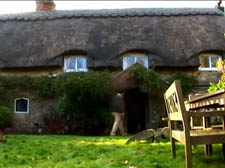
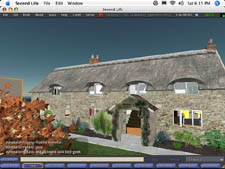
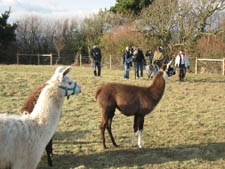
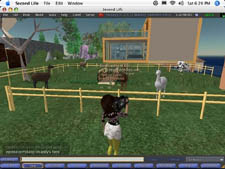
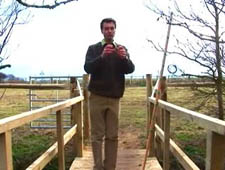
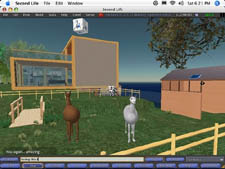
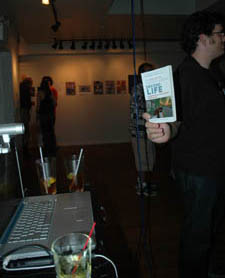
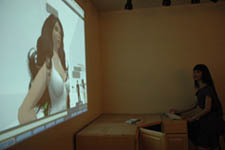
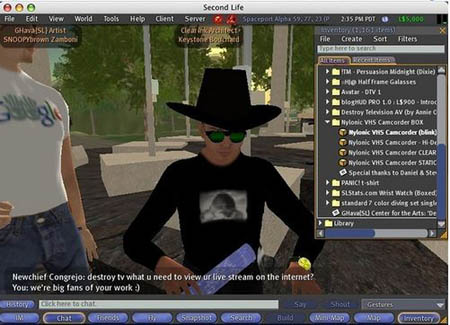
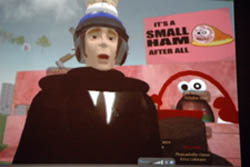
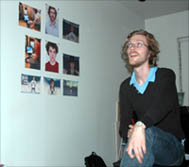
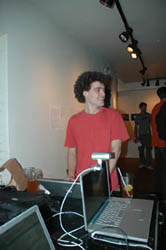
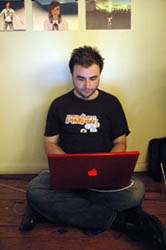
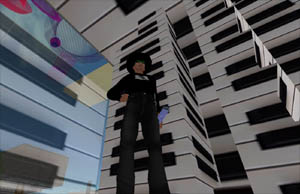
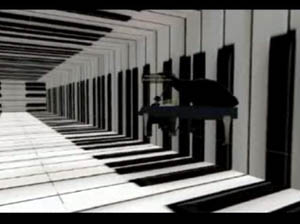
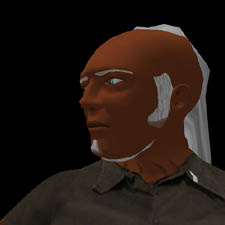
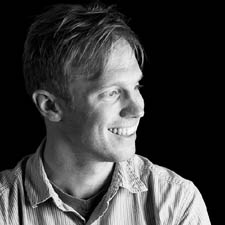
0 Comments For This Post
7 Trackbacks For This Post
June 6th, 2007 at 1:58 am
[...] …more [...]
August 3rd, 2007 at 7:52 pm
[...] had already caught my attention before the competition. I interviewed both for Ugotrade in June (see my earlier post). Then, Keystone explained an earlier version of Architectural Jazz which is now his winning entry. [...]
September 29th, 2008 at 6:56 pm
[...] Tara5 Oh – on the right (me, Tish Shute) interviewed Yoassarian Seattle (Rob Smart, IBM) in Second Life outside Andy Stanford-Clark’s remote control house on Hursley island (for more see here) [...]
September 10th, 2010 at 4:59 pm
[...] images, which were then turned into high speed time lapse videos, forming the most comprehensive documentary of Second Life to date. The raw, unedited high res footage can be found here. The low res versions of the videos [...]
October 15th, 2010 at 10:02 pm
[...] images, which were then turned into high speed time lapse videos, forming the most comprehensive documentary of Second Life to date. The raw, unedited high res footage can be found here. The low res versions of the videos [...]
November 16th, 2010 at 9:30 am
[...] images, which were then turned into high speed time lapse videos, forming the most comprehensive documentary of Second Life to date. The raw, unedited high res footage can be found here. The low res versions of the videos [...]
July 15th, 2012 at 4:12 pm
[...] images, which were then turned into high speed time lapse videos, forming the most comprehensive documentary of Second Life to date. The raw, unedited high res footage can be found here. The low res versions of the videos [...]